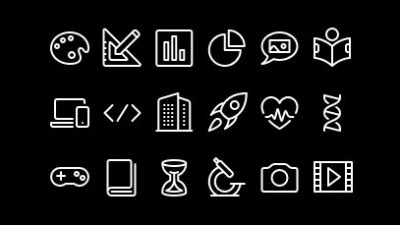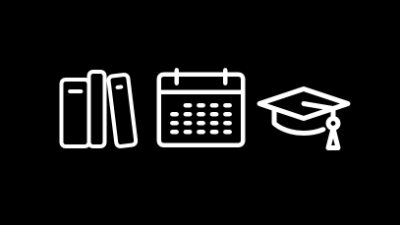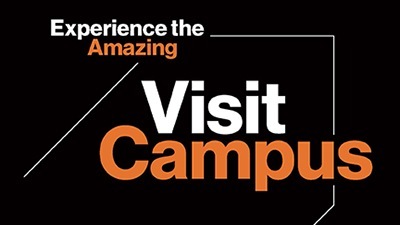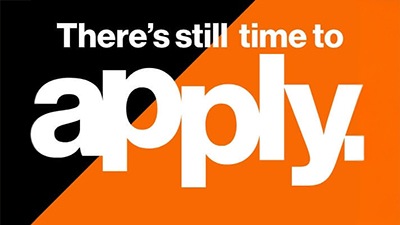Student Perspectives
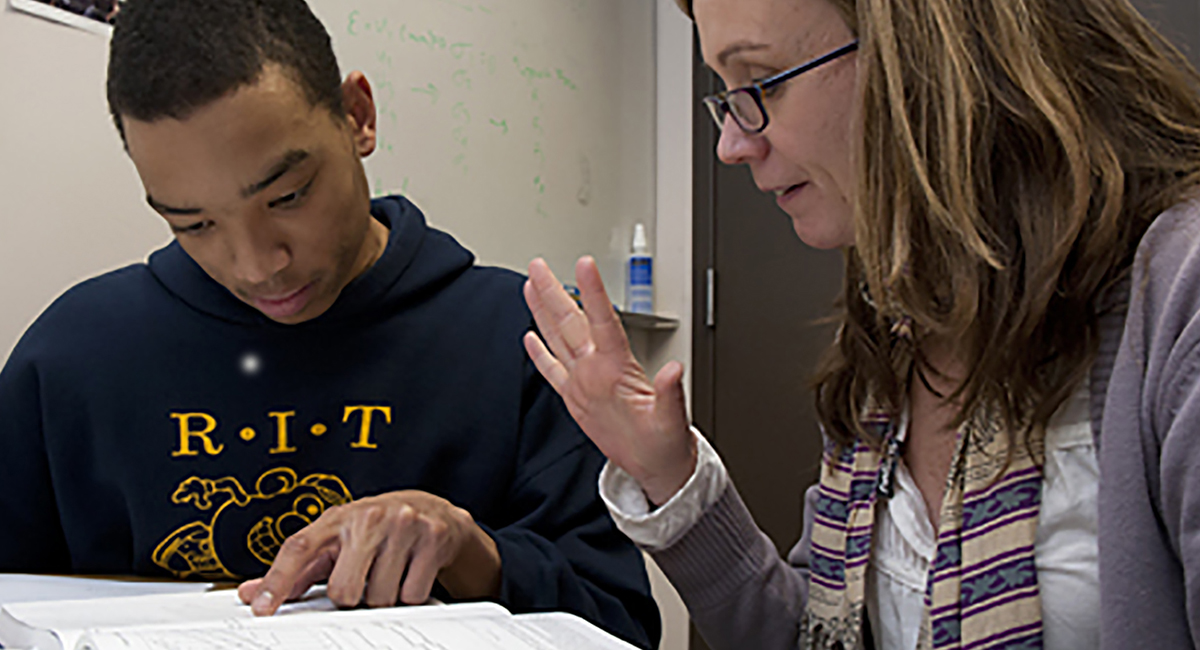
Teach2Connect
Student Perspectives
- RIT/
- Teach2Connect
Student Perspectives
Deaf and hard-of-hearing students give their perspectives on working with RIT Faculty, in and out of the classroom.
Tips for Teachers
Question:
What two tips would you give an instructor who is teaching deaf and hard of hearing students for the first time?
Click on the images below to see video of the student's comments.
Britta Schwall
Business Management
I would suggest an instructor take advantage of the white board or any resource that is very visible for their students to follow. For example, math equations should be written on the white board, don’t just lecture about them. It’s hard for the interpreter to interpret exactly the right terms. Vocabulary should also be written on the board as much as possible.
Rachel Rabenn
Biomedical Science
I would say just, for professors to engage with us, I feel sometimes they’re a little hesitant to call on us or answer our question. But it’s just kind of, like, just answer like any normal student would or ask us anything any normal student would. It’s just like don’t look at us as different.
Gabriel Ponte-Fleary
Visual Media
First, be supportive of the deaf students. Understand that we may need a little more help. We’re the same as other people, the same except we just can’t hear. Sometimes during class, it can be difficult. Also, deaf people struggle with language, it depends on the country they came from, here we depend on English. ASL grammar is different from English so sometimes we really struggle, we may not understand some words so because of that we may need some help, need some support. Technically it’s like that, so be patient, be supportive, be willing to learn our culture and our language. That is really valued!
Emmanuel Perrodin-Njoku
Biomedical Science
First off I think I would say please be patient. Be willing to learn about the various needs of deaf and hard of hearing students. Not all deaf and hard of hearing students are the same, some depend on interpreters, others depend on captionists, others can hear you but depend on seeing you speak clearly. Be willing to learn about all of their different needs. That’s the most important advice I have in my opinion.
Kyle Morris
Communication
I would suggest that new faculty prepare to work with deaf and hard of hearing students, to understand what their needs are for access. If they are oral or deaf, not all deaf students use sign so some may use their voice, others may use an interpreter or c-print. If they can sign and voice that’s fine, just make sure that there is access for all deaf students. So really the number one priority is communication, clear communication.
Working in Groups
Question:
What advice would you give instructors related to setting up student groups to work on projects (both in and out of the classroom)?
Click on the images below to see video of the student's comments.
Rachel Rabenn
Biomedical Science
 First I would ask the students, the deaf or hard-of-hearing students, what they would prefer. Um, a lot of times, I’ve experienced both, where we’re all in separate groups when it’s hard to communicate with all hearing students. And I’ve also experienced being in an all-deaf group where we don’t quite, uh, complement each other’s skills I guess I would say. So, it really depends on the student so I would ask the student first what they would prefer: if they prefer to be in a group that has all deaf or head of hearing or if they prefer to be in a group that’s hearing. It differs, definitely with each class year. Um, but I know the deaf and hard of hearing in my, in biomedical science, in our major are all very close and we take all of our classes together on purpose because we want to be in the same group so. But I know other years it’s different so it depends on the person.
First I would ask the students, the deaf or hard-of-hearing students, what they would prefer. Um, a lot of times, I’ve experienced both, where we’re all in separate groups when it’s hard to communicate with all hearing students. And I’ve also experienced being in an all-deaf group where we don’t quite, uh, complement each other’s skills I guess I would say. So, it really depends on the student so I would ask the student first what they would prefer: if they prefer to be in a group that has all deaf or head of hearing or if they prefer to be in a group that’s hearing. It differs, definitely with each class year. Um, but I know the deaf and hard of hearing in my, in biomedical science, in our major are all very close and we take all of our classes together on purpose because we want to be in the same group so. But I know other years it’s different so it depends on the person.
Emmanuel Perrodin-Njoku
Biomedical Science
 I understand it’s an important role of group projects to help students learn to work together. From my personal experience, I’m fine with faculty going ahead and assigning students to different groups but understand that if you are in a class where group projects are common, be willing to accept feedback from students because if they feel that communication becomes an issue. From my experience working in an all hearing group and I’m the only deaf student so the interpreter will join us to support the communication process and it’s usually good, but after a while communication becomes difficult so I asked the instructor if you don’t mind on one project could you make a group with other deaf and hard of hearing students who can speak for themselves and sign too so the communication in the group was smooth, more easier for me so the teacher was willing and I appreciate that. Again, it requires consideration of the individual student’s needs, so if you have class and the deaf students can speak for themselves and interact fine then go ahead and group them but the point is to get experience with a variety of different people so go ahead and make a variety of assignments but keep in mind their needs.
I understand it’s an important role of group projects to help students learn to work together. From my personal experience, I’m fine with faculty going ahead and assigning students to different groups but understand that if you are in a class where group projects are common, be willing to accept feedback from students because if they feel that communication becomes an issue. From my experience working in an all hearing group and I’m the only deaf student so the interpreter will join us to support the communication process and it’s usually good, but after a while communication becomes difficult so I asked the instructor if you don’t mind on one project could you make a group with other deaf and hard of hearing students who can speak for themselves and sign too so the communication in the group was smooth, more easier for me so the teacher was willing and I appreciate that. Again, it requires consideration of the individual student’s needs, so if you have class and the deaf students can speak for themselves and interact fine then go ahead and group them but the point is to get experience with a variety of different people so go ahead and make a variety of assignments but keep in mind their needs.
Working One-on-One With Faculty
Question:
If you need to speak to your instructor after class or during office hours, what strategies do you use to successfully communicate your message or question?
Click on the images below to see video of the student's comments.
Britta Schwall
Business Management
 I tend to either write or use an interpreter. I want teachers to know that deaf students, deaf and hard of hearing students don’t have the opportunity or the privilege where we can request an interpreter any time, sometimes they are assigned, or unassigned you know so the teacher should be willing to work with the student and meet them half way, write back and forth, their attitude is important so if the student feels insecure to meet with a hearing professor it’s important that the professor to say come on in, sure your welcome here, make that student feel comfortable.
I tend to either write or use an interpreter. I want teachers to know that deaf students, deaf and hard of hearing students don’t have the opportunity or the privilege where we can request an interpreter any time, sometimes they are assigned, or unassigned you know so the teacher should be willing to work with the student and meet them half way, write back and forth, their attitude is important so if the student feels insecure to meet with a hearing professor it’s important that the professor to say come on in, sure your welcome here, make that student feel comfortable.
Gabriel Ponte Fleary
Visual Media
 Again, interpreters with us we depend on them 100% of the time. I experienced after a class I met with the interpreter and asked her if they mind staying after class and they said fine so we sat down with the professor. If the interpret cannot stay I will ask the professor to be patient while we try to communicate and we will write back and forth. It won’t be an easy flowing conversation, but just try your best. Some professors know a little sign language. They can do very basic signs; like baby signs. We can just write back and forth and we will make it smooth communication.
Again, interpreters with us we depend on them 100% of the time. I experienced after a class I met with the interpreter and asked her if they mind staying after class and they said fine so we sat down with the professor. If the interpret cannot stay I will ask the professor to be patient while we try to communicate and we will write back and forth. It won’t be an easy flowing conversation, but just try your best. Some professors know a little sign language. They can do very basic signs; like baby signs. We can just write back and forth and we will make it smooth communication.
Emmanuel Perrodin-Njoku
Biomedical Science
 Often I tend to, and we’re talking about here at RIT, request the department of access services to provide an interpreter. I will contact the professor well in advance about a week in advance and I tell them I would like to meet with them next week, that’s fine so we make an appointment and I request an interpreter and they tend to have someone available to assign but in a situation where it’s last minute and they don’t mind meeting right after class I tend to write back and forth if I’m familiar with the teacher and the teacher is willing and I can speak for myself a little bit but it’s not great and often the instructor is willing to write on the board to make sure that we communicate clearly then we move forward and it’s fine but most of the time I tend to request an interpreter.
Often I tend to, and we’re talking about here at RIT, request the department of access services to provide an interpreter. I will contact the professor well in advance about a week in advance and I tell them I would like to meet with them next week, that’s fine so we make an appointment and I request an interpreter and they tend to have someone available to assign but in a situation where it’s last minute and they don’t mind meeting right after class I tend to write back and forth if I’m familiar with the teacher and the teacher is willing and I can speak for myself a little bit but it’s not great and often the instructor is willing to write on the board to make sure that we communicate clearly then we move forward and it’s fine but most of the time I tend to request an interpreter.
Kyle Morris
Communication
 Hearing teachers should know that RIT has many deaf people, students and faculty and they should be aware that we are all allowed to request an interpreter or write notes back and forth use a computer to type messages or use gestures as long as the hearing person isn’t exaggerating like “can you read lips” don’t do that, just do what’s normal for themselves, I would suggest that. And don’t discount other deaf students like, oh that’s no good, you can’t speak and you don’t have an interpreter so I’m sorry you’ll have to make an appointment for another time, just take advantage of the opportunity to meet now. For a deaf teacher, it should be the same. They shouldn’t discount a student who doesn’t know sign language, don’t discount them, they should be treated fairly, just say so you don’t sign so let’s use gestures to communicate, do what you can to meet their needs. That’s your role as a teacher to help and make sure students are successful in the future, not just in class but the future.
Hearing teachers should know that RIT has many deaf people, students and faculty and they should be aware that we are all allowed to request an interpreter or write notes back and forth use a computer to type messages or use gestures as long as the hearing person isn’t exaggerating like “can you read lips” don’t do that, just do what’s normal for themselves, I would suggest that. And don’t discount other deaf students like, oh that’s no good, you can’t speak and you don’t have an interpreter so I’m sorry you’ll have to make an appointment for another time, just take advantage of the opportunity to meet now. For a deaf teacher, it should be the same. They shouldn’t discount a student who doesn’t know sign language, don’t discount them, they should be treated fairly, just say so you don’t sign so let’s use gestures to communicate, do what you can to meet their needs. That’s your role as a teacher to help and make sure students are successful in the future, not just in class but the future.
Emily Lederman
Computer Science
 Actually, office hours are really nice because typically the offices are, you know, they’re very small so I’ll be sitting, like, you know, like right in front of my professor and it’s a one-on-one, like, environment. So, like, I can, like, understand, like, clearly what they are saying because they’re just put right in front of me. And so, if I need something to be repeated like I’ll just ask and so I just be sure that, you know, we’re all in the visual, straight-forward environment.
Actually, office hours are really nice because typically the offices are, you know, they’re very small so I’ll be sitting, like, you know, like right in front of my professor and it’s a one-on-one, like, environment. So, like, I can, like, understand, like, clearly what they are saying because they’re just put right in front of me. And so, if I need something to be repeated like I’ll just ask and so I just be sure that, you know, we’re all in the visual, straight-forward environment.
Technology in the Classroom
Question:
What kinds of technology are teachers using in the classroom that really supports the learning experience for deaf and hard of hearing students?
Click on the images below to see video of the student's comments.
Britta Schwall
Business Management
I have one classroom here in the Saunders College of Business that’s really neat, it has like six TV’s in the class with four on the side walls so there’s one right next to the desks where students sit in a group of four, so when the teacher presents and refers to the presentation on the board in the front of the classroom the table where I sit with the interpreters right across from me, they can refer to the TV display at our table so it’s easy for me to watch them and easily look at what’s being presented on the board. It’s hard to describe, I’d have to show you what the classroom looks like, but it’s possible to follow and not just, with six TV’s all around the classroom, there’s one TV right next to the teacher and there’s also one at the back of the room behind me so the interpreter can behind me and know what the teacher is talking about so it’s also easier for the interpreter so the interpreter can follow without having to keep turning around to look at the board to understand what the teacher is talking about so that’s a really nice benefit. It’s nice to have a TV behind me for the interpreter not just for me.
Rachel Rabenn
Biomedical Science
Powerpoints are extremely helpful, even if it’s not-obviously it’s not going to be exactly what is being said or include everything, but just to have an outline of what is being said or what’s being talked about like displayed, as a visual cue of everything, it’s extremely helpful. Um, when professors just stand up there and talk I get very lost a lot of the time. And I know a lot of my deaf friends do as well but having a powerpoint or some visual something is very helpful and just something that we can, like, print out on MyCourses and just have it the day before, we can kind of look over it. I know it’s helpful for interpreters and the captionists to have it as well so they can spell things right, and if they’re not sure of a sign or anything they can come and ask us, so that’s extremely helpful.
Working With C-Print & Interpreters
Question:
If you use C-print in class for communication access, what would you like your instructor to know about the challenges you sometime face?
Click on the image below to see video of the student's comments.
Rachel Rabenn
Biomedical Science
If someone in the class has a question, because a lot of the times people talk quietly in classes, if the professor could repeat it so that the interrupter and caption-captionist can get the question. Because a lot of times that’s a problem or the professor is not repeating the question and the interrupter has been, can’t interrupt and the captionist can’t caption what’s being said. So, just being aware that there’s someone else in the room and just because the teacher can hear what the other person is saying doesn’t mean the interrupter and captionist can. So just, telling the class to speak up or repeating questions that are being said is really helpful because then we won’t miss what’s being asked.
Emily Fitzgerald
Accounting
I really love C-Print, it really helps a lot especially for teachers with accents, it’s really hard for me to understand and I like to have C-Print because I can visually see, live, what the teacher is saying so I can ask questions if there’s any questions or if she asks me a question then I know what question she’s asking instead of having me ask her to repeat the question. So I really depend on C-Print for teachers with accents.
Question:
If you use interpreters in class for communication access, what would you like your instructor to know about the challenges you sometime face?Click on the image below to see video of the student's comments.
Britta Schwall
Business Management
It’s important to keep in the back of your mind that all interpreters have not majored in Business, the interpreting field yes, but not the subject I’m studying, so all the vocabulary that they hear in a class they may be clueless, so sometimes in class it’s their first time hearing that term so it’s important to share materials with them ahead of time so they know what to interpret.
Emmanuel Perrodin-Njoku
Biomedical Science
First, make sure you meet with your interpreter before you start to work together, get to know them and maybe the interpreter can explain their role better to you and you will understand better what they do. The interpreter is there to interpret for the students to understand you, the faculty and the hearing students too. They are there for everyone, so that everyone has access to communication, so in class when students are in their seats and the professor asks a question be sure to keep in mind that there is an interpreting lag. When you speak and the interpreter is still interpreting and the deaf student wants to raise their hand to participate they may be too late or they miss the time to respond and that is a missed opportunity for them. They feel they are constantly trying to catch up. The teacher should make sure that everyone has the same access to the questions. Also, just an FYI to teachers, the interpreter will sometimes interrupt if they miss something or don’t understand or are thrown off, they are just trying to make sure that the deaf students have the same access as the hearing students. Be willing to repeat for the interpreter or maybe if it is happening again and again, talk with the interpreter to find out ways the two of you can work together. Maybe slow down when you are talking and make sure that they have access to the prep materials. Work with them because they are your colleagues.
Working With Support Faculty
Question:
What has been your experience working with NTID support faculty related to tutoring and advising?
Click on the image below to see video of the student's comments.
Britta Schwall
Business Management
 Yes, with support I understand much better. The tutor really helps me. They teach in first language, my first language. There are no translation gaps or any translation at all. It is direct and I understand everything from A-Z and it is one on one. It you are working with a tutor one on one it is nice because tutoring in general benefits everyone, doesn’t matter if they are Deaf or hard-of-hearing. So, it’s always nice to have that service in ASL.
Yes, with support I understand much better. The tutor really helps me. They teach in first language, my first language. There are no translation gaps or any translation at all. It is direct and I understand everything from A-Z and it is one on one. It you are working with a tutor one on one it is nice because tutoring in general benefits everyone, doesn’t matter if they are Deaf or hard-of-hearing. So, it’s always nice to have that service in ASL.
Emmanuel Perrodin-Njoku
Biomedical Science
 Honestly, that helped me so much! I got here and I am from a deaf family and I went to all deaf schools my whole life. So, the college environment is a different type of a challenge for me. Ok, I want to make sure that I do well in all my classes. I learned about support services during orientation in my first week here. So, fine I started requesting interpreters and go to my first week of classes and meeting tutors. Since that first week they have helped me so much, helped me prepare for class and materials I didn’t understand I would ask for clarification in ASL so then I would receive the explanation back in sign language and then I would get it and know what it meant. I would really prepare. If I had other deaf or hard-of-hearing classmates I would introduce myself to them and get to know them better in class. We would work together with the guidance of a tutor. It is the reason why I could get through my classes. If it wasn’t for the tutors my experience would have been a lot more frustrating and more of a struggle to keep up without this support. They helped me a lot.
Honestly, that helped me so much! I got here and I am from a deaf family and I went to all deaf schools my whole life. So, the college environment is a different type of a challenge for me. Ok, I want to make sure that I do well in all my classes. I learned about support services during orientation in my first week here. So, fine I started requesting interpreters and go to my first week of classes and meeting tutors. Since that first week they have helped me so much, helped me prepare for class and materials I didn’t understand I would ask for clarification in ASL so then I would receive the explanation back in sign language and then I would get it and know what it meant. I would really prepare. If I had other deaf or hard-of-hearing classmates I would introduce myself to them and get to know them better in class. We would work together with the guidance of a tutor. It is the reason why I could get through my classes. If it wasn’t for the tutors my experience would have been a lot more frustrating and more of a struggle to keep up without this support. They helped me a lot.
Kyle Morris
Communication
 Yes, a lot. It helps me to better understand what the teacher is explaining. If I don’t understand, the tutor expands on information which helps to motivate me more. When we sit down and they explain and then I understand it helps to motivates me to want to learn more. I learn something new even though the vocabulary given in class is something that I don’t understand but when the tutor explains it then helps me in my academic and non-academic life to be able to help others. The tutor teaches me and then I am able to pass on the knowledge and teach others if they need help I can teach them what I have learned. And I like how the tutor can’t allow, well, can help like if there is a worksheet problem then they make sure that your struggle first trying to figure it out and then they help you. Other people have said, “Oh, it’s not fair that the tutor is there to help!” They do help, but they don’t answer for you. If they did that you would get an “A”, but would you understand? That is the point.
Yes, a lot. It helps me to better understand what the teacher is explaining. If I don’t understand, the tutor expands on information which helps to motivate me more. When we sit down and they explain and then I understand it helps to motivates me to want to learn more. I learn something new even though the vocabulary given in class is something that I don’t understand but when the tutor explains it then helps me in my academic and non-academic life to be able to help others. The tutor teaches me and then I am able to pass on the knowledge and teach others if they need help I can teach them what I have learned. And I like how the tutor can’t allow, well, can help like if there is a worksheet problem then they make sure that your struggle first trying to figure it out and then they help you. Other people have said, “Oh, it’s not fair that the tutor is there to help!” They do help, but they don’t answer for you. If they did that you would get an “A”, but would you understand? That is the point.
Emily Lederman
Computer Science
 Actually my first semester I was taking a math class and I was doing OK but I wanted to really, like, improve my grade. So, there was this one woman who had been emailing us saying like ‘OK, I’m here for NTID students in these math classes’ so I contacted her and started doing tutoring with her. And I think that that really helped me, it was really nice because she knew ASL and she knew how to work with hard-of-hearing students in general and she was just awesome. And I actually got an A in that class, so it was awesome.
Actually my first semester I was taking a math class and I was doing OK but I wanted to really, like, improve my grade. So, there was this one woman who had been emailing us saying like ‘OK, I’m here for NTID students in these math classes’ so I contacted her and started doing tutoring with her. And I think that that really helped me, it was really nice because she knew ASL and she knew how to work with hard-of-hearing students in general and she was just awesome. And I actually got an A in that class, so it was awesome.
Importance of Captioning Media
Question:
Have you had issues with captioning and media used in the classroom?
Click on the image below to see video of the student's comments.
Rachel Rabenn
Biomedical Science
 Videos that aren’t captioned, yes. Even though I guess that it is a rule at RIT that they all have to be captioned that’s not always the case, or an assignment is given to us where we have to watch a video and answer questions and the video is not captioned. And then we’re falling behind because we can’t do the assignment until the video is captioned and it takes a long time so make sure videos are captioned.
Videos that aren’t captioned, yes. Even though I guess that it is a rule at RIT that they all have to be captioned that’s not always the case, or an assignment is given to us where we have to watch a video and answer questions and the video is not captioned. And then we’re falling behind because we can’t do the assignment until the video is captioned and it takes a long time so make sure videos are captioned.
Gabriel Ponte-Fleary
Visual Media
 Well the only problem is sometimes the movies do not have captioning. It is a big issue because I do have an interpreter, but without captioning it is hard to look at the interpreter for the information and try to get my eyes back to the movie in time to see what the interpreter was just talking about and then hurry up and look back at the interpreter for the next bit of information. You will either miss some of the interpreter or the movies’ visual information. So, when there is captioning it is a perfect, easy to watch the movie and follow the story smoothly. Sometimes most professors know they have to add captioning to their in-class media and sometimes the technology messes up or they can’t find a video with captions, but if you can’t find a captioned version you can’t show it! It is not fair to us even if there is just one deaf student in the class, it’s not fair. The interpreter can help, but we will miss information looking back and forth and that is weird.
Well the only problem is sometimes the movies do not have captioning. It is a big issue because I do have an interpreter, but without captioning it is hard to look at the interpreter for the information and try to get my eyes back to the movie in time to see what the interpreter was just talking about and then hurry up and look back at the interpreter for the next bit of information. You will either miss some of the interpreter or the movies’ visual information. So, when there is captioning it is a perfect, easy to watch the movie and follow the story smoothly. Sometimes most professors know they have to add captioning to their in-class media and sometimes the technology messes up or they can’t find a video with captions, but if you can’t find a captioned version you can’t show it! It is not fair to us even if there is just one deaf student in the class, it’s not fair. The interpreter can help, but we will miss information looking back and forth and that is weird.

